If you’ve ever wandered through the wilds of Georgia, you might have noticed the abundance of wild edible plants scattered like hidden treasures along your path. These plants, with their unique flavors and culinary versatility, can offer a connection to nature that is both enriching and satisfying.
But did you know that among these green gems, there’s a world of untold stories and secrets waiting to be unraveled? Join us as we uncover the fascinating tales and hidden wonders behind Georgia’s wild edible plants, revealing a tapestry of flavors and histories that will surely intrigue your senses and curiosity.
Berry Delights
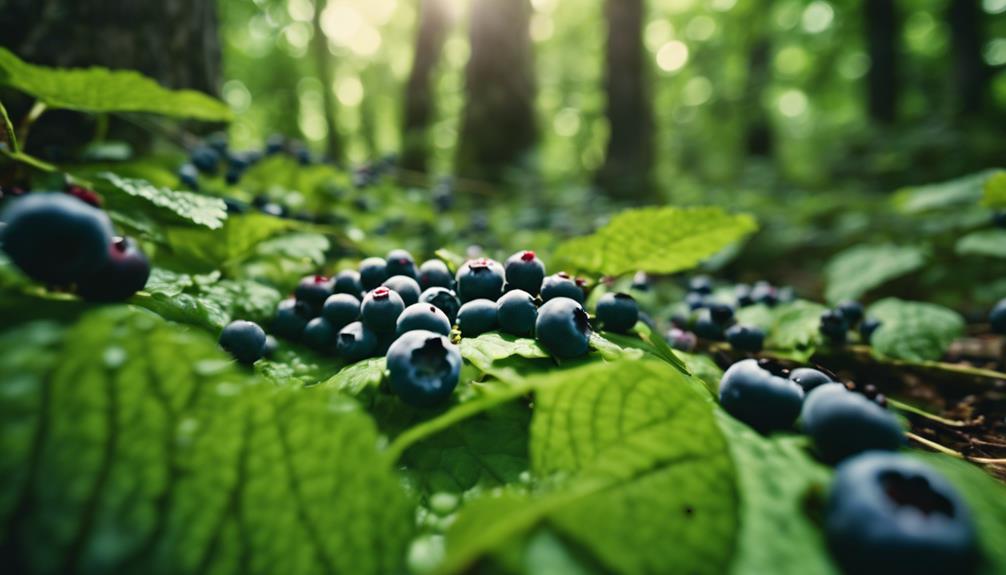
Indulge in Georgia’s diverse array of native berry delights, each offering unique flavors and nutritional benefits. From the tangy sweetness of blueberries and the earthy richness of huckleberries to the delicate tartness of raspberries and the bold sweetness of blackberries, wild edibles in Georgia present a feast for your taste buds. These berries not only tantalize your palate but also pack a punch of essential nutrients like antioxidants, vitamins, and fiber.
Exploring the bountiful land of Georgia, you’ll also encounter other indigenous berry options like elderberries, plums, and paw paws. These wild edibles contribute to the state’s rich biodiversity, adding depth to the foraging experience. Serviceberries, persimmons, and crabapples further enrich Georgia’s wild edible offerings, each bringing its own nutritional benefits and distinct flavors to the table.
As you venture through Georgia’s wilderness, don’t miss the opportunity to savor the goodness of red mulberries, grapes, and viburnums. These berry-producing plants not only enhance the local ecosystem but also provide ample foraging opportunities for those eager to connect with nature’s delicious treasures.
Nutritious Greens
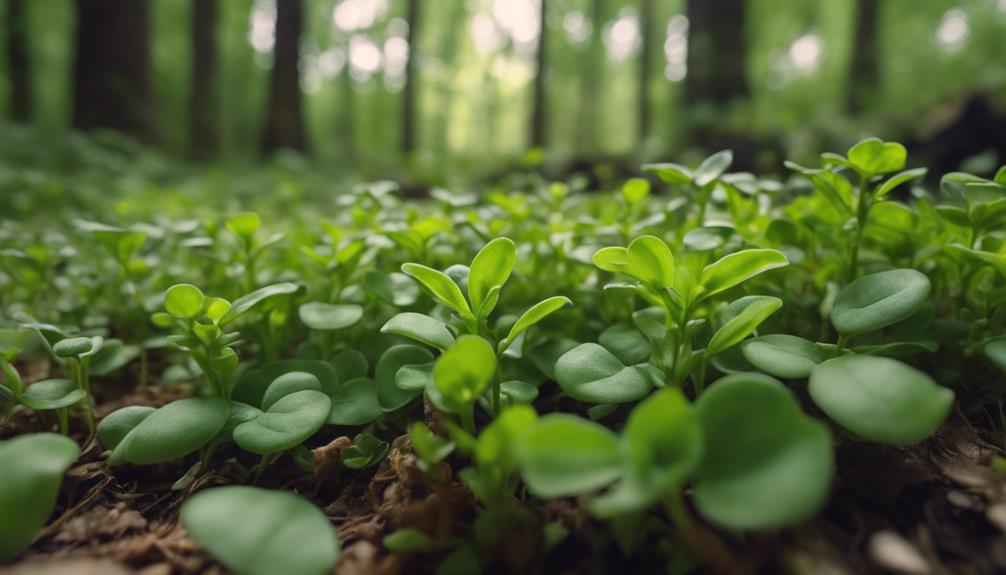
As you explore Georgia’s diverse landscape, you’ll discover a wealth of nutritious greens like dandelion, chickweed, lamb’s quarters, purslane, and wild garlic, all offering essential vitamins and minerals for your well-being.
Among these nutrient-packed greens, wild garlic stands out for its distinct flavor and health benefits. Wild garlic, also known as ramps, is a rich source of vitamins A and C, crucial for supporting your immune system and promoting healthy skin. Additionally, wild garlic contains minerals like iron and calcium, which are essential for maintaining strong bones and overall bodily functions.
By incorporating wild garlic into your diet, you can boost your antioxidant intake, aid digestion, and enjoy a flavorful addition to your meals. These wild edible greens aren’t only low in calories but also high in dietary fiber, making them a healthy choice for managing weight and improving gut health.
Next time you forage for wild greens in Georgia, don’t forget to include the nutritious wild garlic in your culinary adventures.
Aromatic Wild Garlic
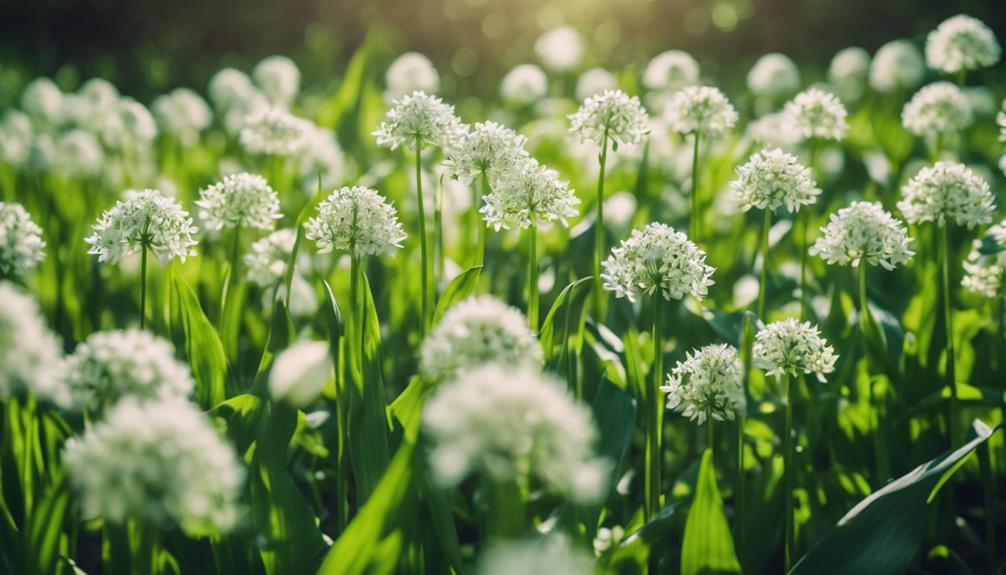
Wild garlic, a fragrant and flavorful wild edible plant native to Georgia, adds a distinctive touch to culinary creations with its aromatic leaves and mild garlic taste. Also known as Allium canadense, this plant’s slender leaves release a strong garlic scent when crushed, aiding in easy identification.
Not only do the bulbs of wild garlic enhance dishes with a gentle garlic flavor, but they also offer nutritional benefits. Rich in essential vitamins and minerals such as vitamin C and iron, wild garlic can boost your health while tantalizing your taste buds.
Foragers in Georgia can enjoy harvesting wild garlic sustainably, reaping the rewards of its culinary versatility and nutrient content. Incorporate wild garlic into your meals to not only elevate flavors but also to increase your intake of vital nutrients like vitamin C, supporting your overall well-being.
Sweet Wild Strawberries
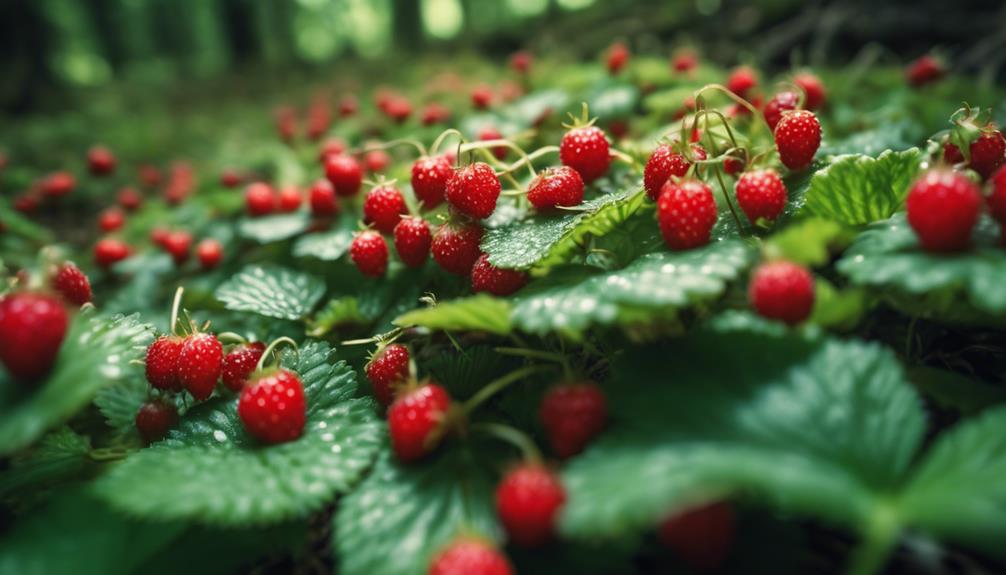
Nestled amidst Georgia’s forests, fields, and meadows, you’ll find sweet wild strawberries (Fragaria virginiana) offering a flavorful treat with a unique sweetness and aromatic fragrance distinct from cultivated varieties. These Georgia native strawberries, rich in vitamin C, antioxidants, and dietary fiber, provide a nutritious option when foraged responsibly.
Identifying them correctly is crucial to avoid any look-alike plants that may be harmful. Whether enjoyed fresh, in jams, or as a delightful addition to desserts, sweet wild strawberries bring a burst of flavor to culinary creations in Georgia’s wilderness. Their small size packs a punch of sweetness, making them a popular choice for those who appreciate the natural bounty of the land.
Unique American Persimmon
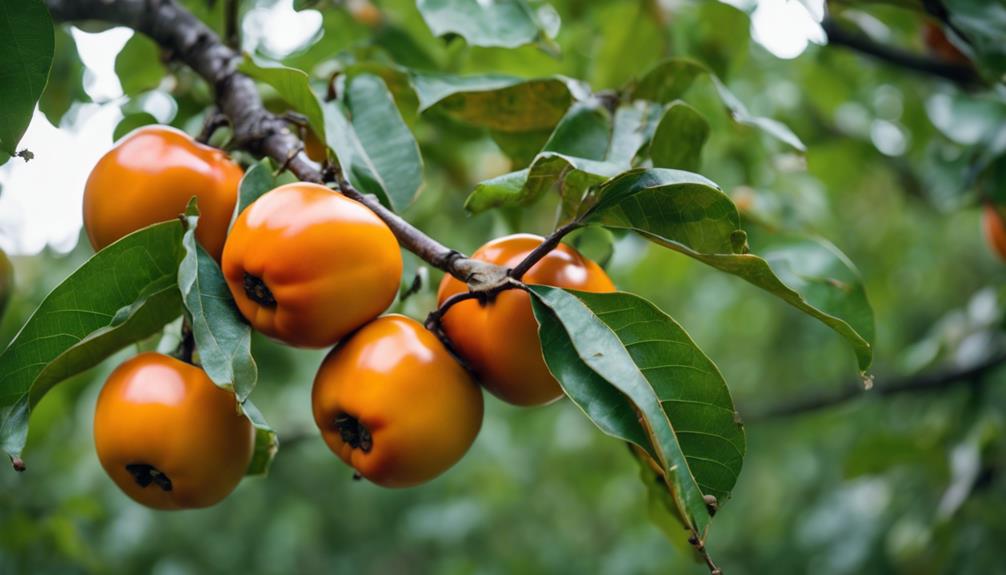
Among the native fruit-bearing trees in Georgia, the American Persimmon stands out for its sweet and flavorful fruit. The American Persimmon tree, scientifically known as Diospyros virginiana, can grow between 35-60 feet tall, displaying dark, blocky bark and distinctive oval-shaped leaves.
Its fruit ripens during the fall, transitioning from green to a vibrant orange color, signaling its readiness for consumption. American Persimmons aren’t only delicious but also packed with essential nutrients like vitamins A and C, fiber, and antioxidants, making them a healthy choice to incorporate into your diet.
To fully enjoy the American Persimmon’s taste, it’s best to harvest them after a frost or allow them to ripen fully to reduce their astringency and enhance their sweetness. When foraging for wild edibles in Georgia, keep an eye out for the unique American Persimmon tree, as its fruit can offer a delightful and nutritious treat.
Foraged Mushrooms
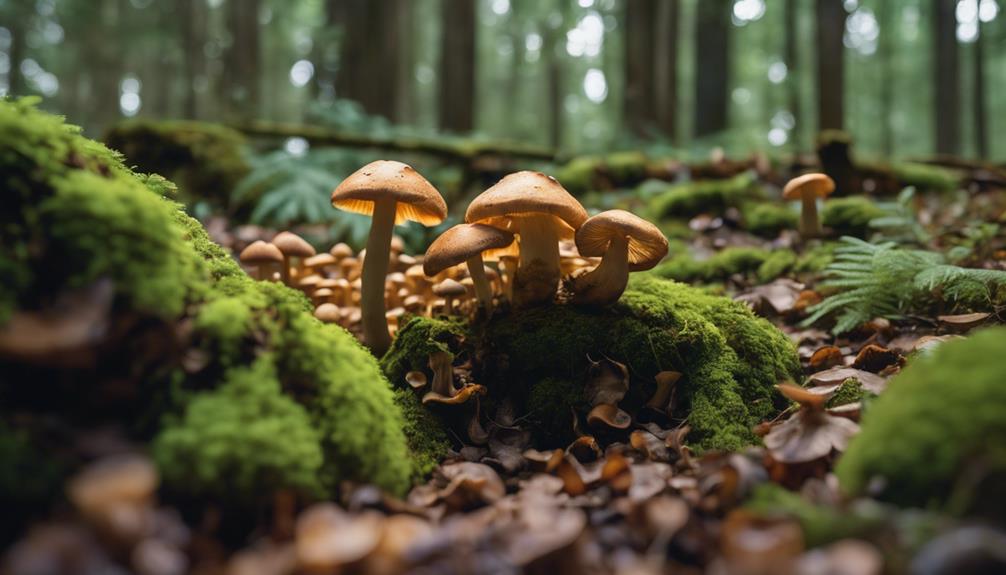
When foraging for mushrooms in Georgia, it’s essential to prioritize proper identification to distinguish between edible varieties and toxic species. Among the popular foraged mushrooms in Georgia, morel mushrooms stand out for their distinctive appearance and rich flavor. These prized fungi are cherished by foragers for their unique honeycomb-like caps and earthy taste, making them a sought-after ingredient for culinary enthusiasts. However, it’s crucial to note that proper identification is crucial when hunting for morels, as toxic look-alike species exist that can pose serious health risks if consumed.
Georgia’s diverse ecosystems, ranging from lush forests to open grasslands, provide an ideal habitat for morel mushrooms to thrive. Experienced foragers often venture into these varied landscapes to seek out morels based on seasonality and specific environmental conditions. The thrill of discovering these elusive fungi in the wild adds to the excitement of foraging, offering a rewarding experience for those willing to put in the effort to find these gastronomic treasures.
Delicate Violets
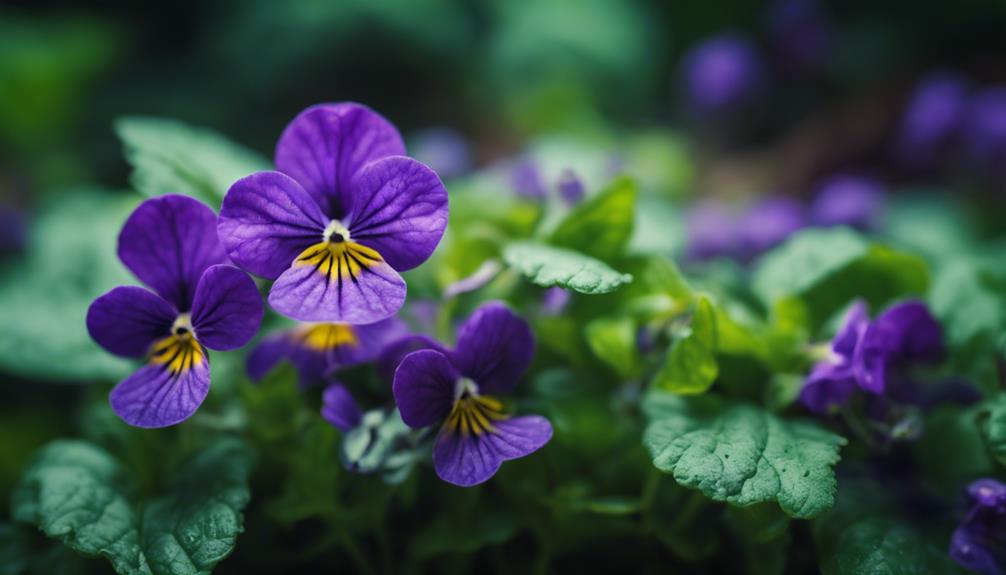
In Georgia, native wildflowers known as delicate violets bloom in various colors, including purple, white, and yellow, enhancing the landscape with their beauty. These Viola species are edible and can be incorporated into culinary dishes like salads, desserts, and infused vinegars.
Apart from their gastronomic uses, some delicate violets have medicinal properties that have been traditionally employed to soothe sore throats and skin irritations. Foraging these wild violets sustainably not only contributes to biodiversity but also offers nutritional benefits to foragers.
When exploring the lush landscapes of Georgia, keep an eye out for these delicate violets, as they not only add a pop of color to the surroundings but also provide a unique opportunity to connect with nature and enjoy their subtle flavors.
Remember to forage responsibly, respecting nature’s delicate balance while appreciating the gifts it has to offer.
Healing Pokeweed
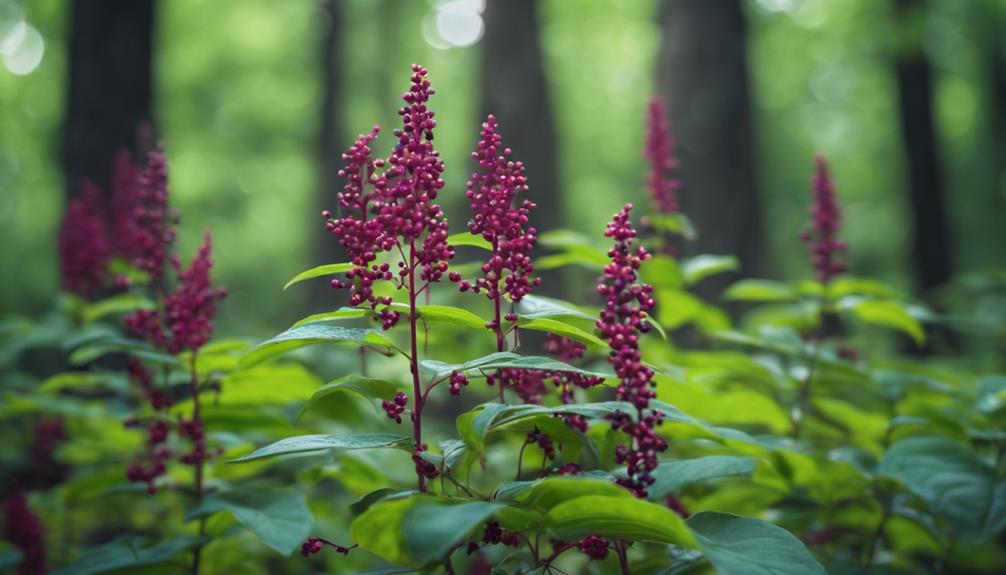
Healing properties are attributed to the wild edible plant known as pokeweed, also scientifically named Phytolacca americana, commonly found in Georgia. Despite its toxicity in raw form, pokeweed can be processed to eliminate toxins and used for medicinal purposes. Historically, pokeweed has been employed to treat conditions like arthritis, inflammation, and skin ailments. Proper preparation methods, such as multiple boilings of the leaves, are crucial to render pokeweed safe for consumption. The roots, leaves, and berries of pokeweed have been integral to traditional medicine for generations due to their healing potential.
In addition to pokeweed, another wild edible plant with healing properties found in Georgia is wood sorrel. Wood sorrel is known for its high vitamin C content and has been used in traditional medicine to treat ailments like scurvy and fevers. When foraging for wild edible plants in Georgia, learning about the healing properties of both pokeweed and wood sorrel can enhance your understanding of natural remedies available in the region.
Spicy Wild Ginger
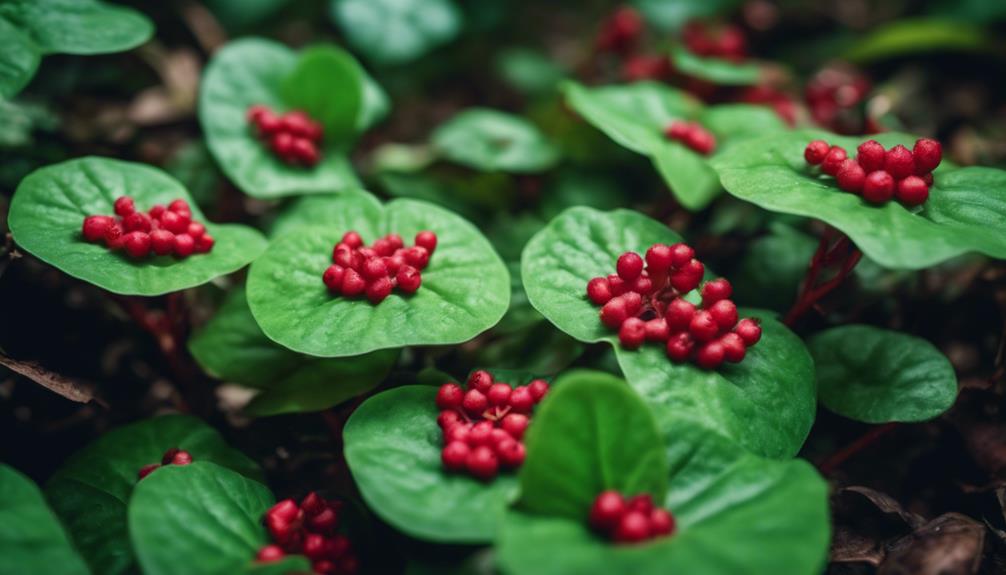
Nestled in the woodlands of Georgia, you’ll discover Spicy Wild Ginger, a native perennial herbaceous plant renowned for its unique spicy-scented rhizomes.
Native American tribes have long valued Spicy Wild Ginger for its culinary and medicinal properties. The plant, scientifically known as Asarum canadense, boasts heart-shaped leaves and rhizomes that emit a warm, spicy aroma.
Traditionally, Native Americans used Spicy Wild Ginger to add a distinct spicy flavor to various dishes, making it a staple in their cuisine. This plant thrives in shady, moist woodland environments, making it a sought-after addition to home gardens for both its practical and ornamental appeal.
However, it’s crucial to harvest Spicy Wild Ginger’s rhizomes sustainably to ensure the plant’s conservation and continued presence in the wild. By respecting the plant’s natural habitat and harvesting practices, you can enjoy the unique flavors and cultural significance of this beloved Native American plant.
Frequently Asked Questions
What Is the Wild Food in Georgia?
You’ll discover an array of wild foods in Georgia, from blackberries to dandelions. These plants offer nutrients and flavors for foragers. When tending to wild edibles in gardens, remember proper care ensures successful harvests of these valuable additions to diets.
How Do You Know if a Wild Plant Is Edible?
To know if a wild plant is edible, consult reliable resources for accurate identification. Look for unique features matching known edible plants. When unsure, seek guidance from experts. Never consume a wild plant unless you are absolutely certain it is safe to eat.
What Shrubs Are Edible in Georgia?
To know what shrubs are edible in Georgia, check out blueberries, huckleberries, blackberries, raspberries, serviceberries, beautyberries, and viburnums. These shrubs offer tasty and forageable fruits that you can enjoy while exploring the wilderness of Georgia.
What Fruit Plants Are Native to Georgia?
You’ll find a rich variety of native fruit plants in Georgia, such as blueberries, huckleberries, strawberries, persimmons, and pecans. These plants thrive in the state’s diverse landscape, offering a bounty of delicious and nutritious options.


